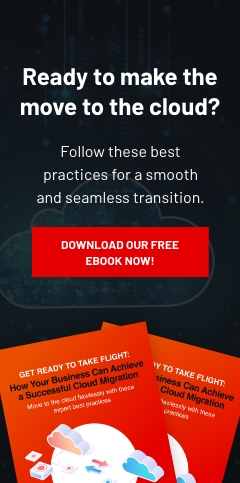Disasters can strike anytime without warning, resulting in disruptions and downtime that can cost you thousands of dollars in revenue. If you're unable to recover quickly, you risk losing your customers to your competition, or worse, you may have to shut down your business altogether. This is why it's important to have a business continuity plan (BCP) in place.
What is a business continuity plan?
A BCP is a document that outlines procedures and processes that will keep your business running or will allow you to restore operations as quickly as possible in the event of a disaster.
What are the threats to business continuity?
Every business has its own primary threats to its operations. And while business owners should prepare for every possible disaster, here are the most common ones to watch out for:
1. Pandemics
When the COVID-19 pandemic struck, businesses around the world felt its impact. Lockdown and quarantine policies forced people to stay at home, and many businesses such as restaurants and hotels lost valuable customers. Without customers and clients to generate revenue, many companies had to shut down.
2. Natural disasters
Natural disasters refer to the likes of earthquakes, hurricanes, volcanic eruptions, and wildfires. We can predict certain natural disasters like hurricanes, while others like earthquakes can hit us when we least expect them. Natural disasters can damage vital infrastructures such as power lines, leading to downtime and revenue loss.
3. Cyberattacks
Some disasters are man-made and deliberate, such as cyberattacks. These are designed to disrupt business operations by stealing data or disabling computers and network resources.
4. Utility outages
Power interruption, internet service downtime, and other utility outages can severely disrupt your operations, leading to loss of productivity and revenue.
What are the benefits of a BCP?
Any form of disruption to your business is costly, which is why it's essential to have a BCP ready. Here are the benefits of having a BCP in place.
1. Keeps business operations running
A BCP keeps your business running or allows you to recover quickly after a crisis. This prevents or minimizes financial loss resulting from the downtime.
2. Builds customer confidence
When your customers see that you can quickly bounce back from a disaster and continue providing quality service, they'll be more confident to stick with you.
3. Gives you a competitive edge
Businesses that are unable to recover quickly after a disaster will eventually lose their customers. If your company has the capability of resuming operations immediately after a crisis, it's more likely that your clients will stay with you rather than switch to your competition.
Creating an effective BCP
Having a BCP is part of being a resilient business. Here are some tips to help you create a BCP:
1. Identify your goals
A BCP applies to all your company's vital business functions, and not just your IT department. You need to identify department-specific goals, which will guide you in developing your BCP and recovery strategies.
2. Create a business continuity team
This team must be composed of cross-functional managers who will be in charge of planning, reviewing, and implementing your BCP.
3. Conduct a business impact analysis (BIA)
This will allow you to identify the biggest threats to your operations. Discuss with your business continuity team how to modify essential business functions such as human resources, sales, customer service, and more, so that you’ll be able to continue operating after a disaster.
4. Creating a plan for each business function
After identifying the critical business functions needed to keep your company operating during and after a crisis, you need to create a plan for each function. It should include:
- The impact of the disaster on employees and customers, and how to keep in touch with them
- Emergency policies that will allow your employees to work remotely
- Names and contact information of essential personnel
- Financial resources you can tap
- Organizations and external partners you can work with to restore normal operations
After completing your BCP, present it to your employees and stakeholders. Conducts tests to see what part of the plan works and what doesn't, so adjustments can be done immediately.
Disasters are unpredictable, so having a BCP in place is important. An essential part of an effective BCP is a backup recovery system you can rely on. This is where Complete Document Solutions can help you. We will provide you with a powerful and cost-effective backup system that is designed to protect your data from disasters and restore it within minutes. Give us a call today to learn more.



Leave a comment!